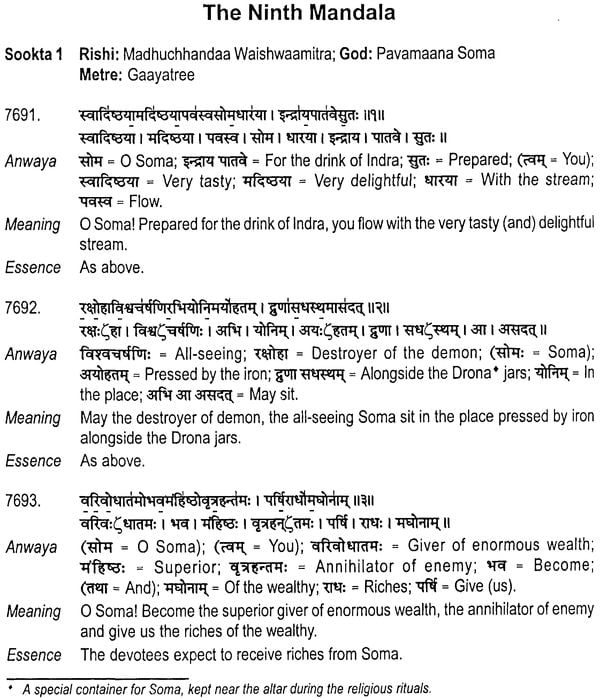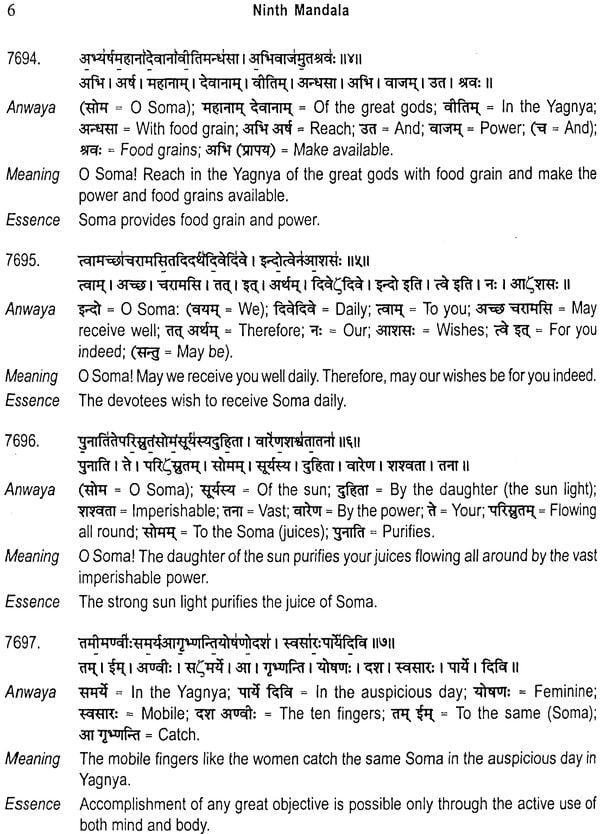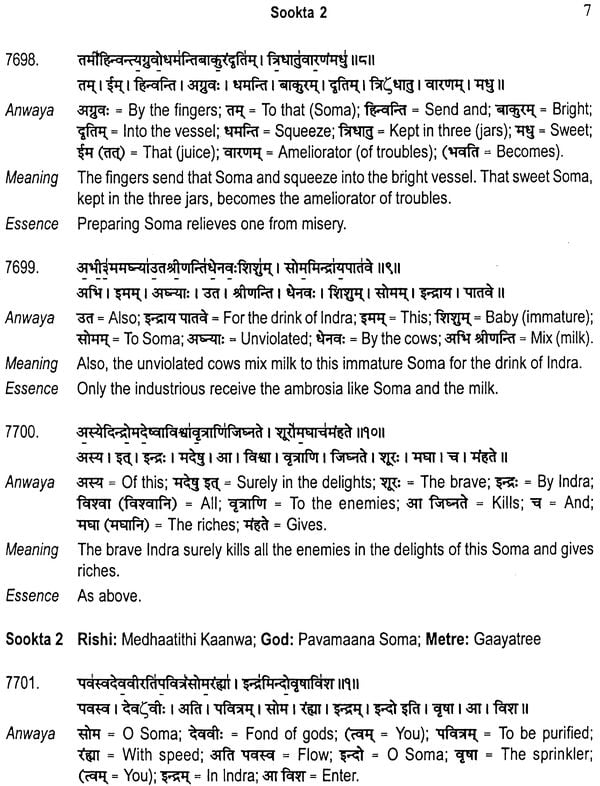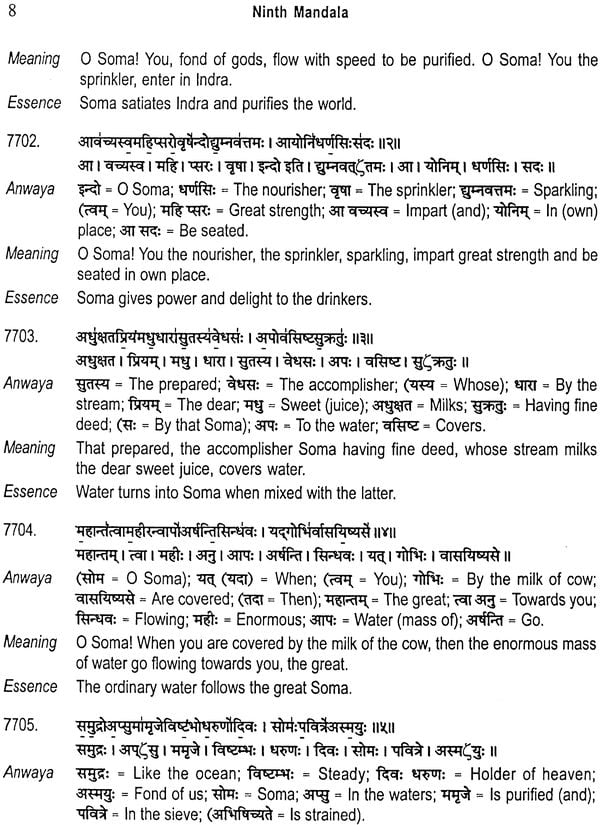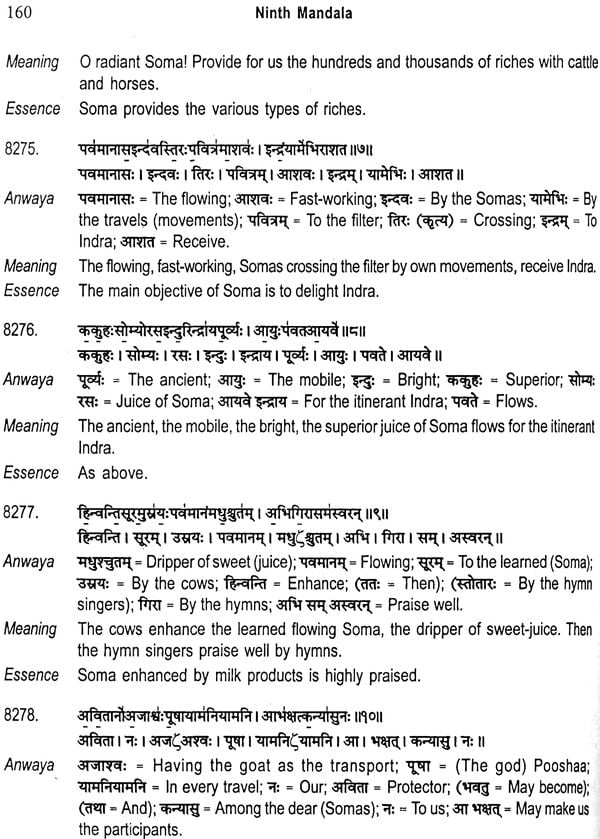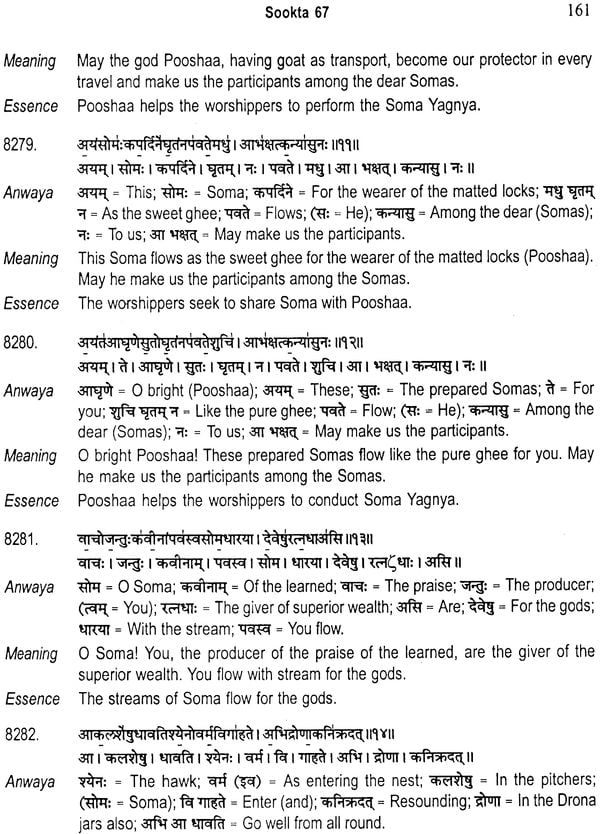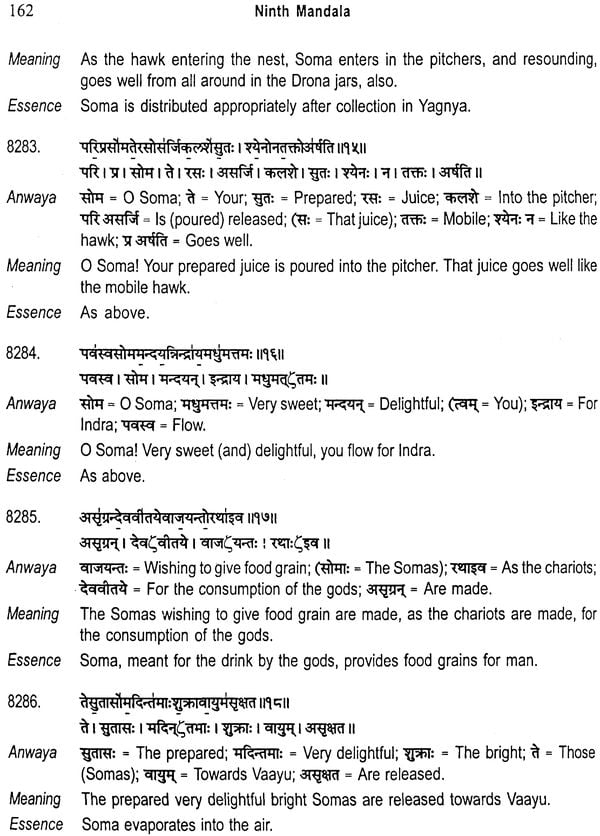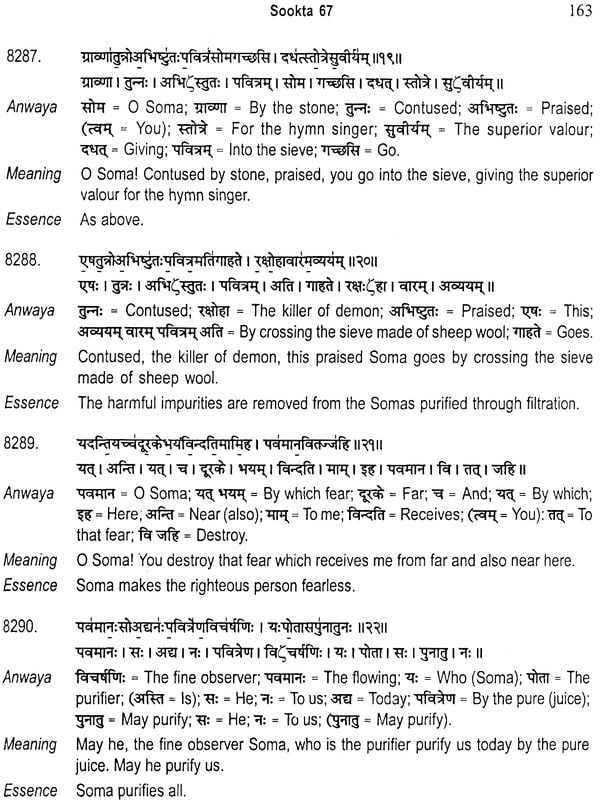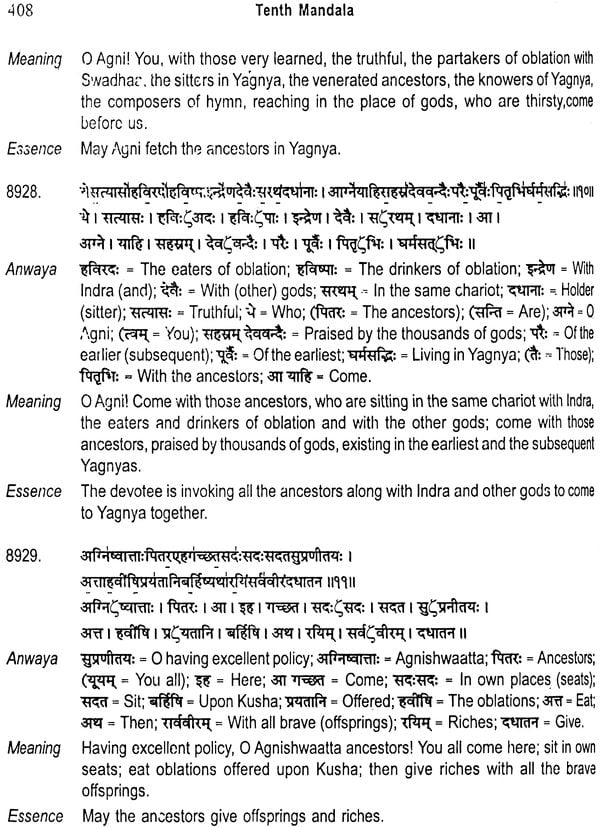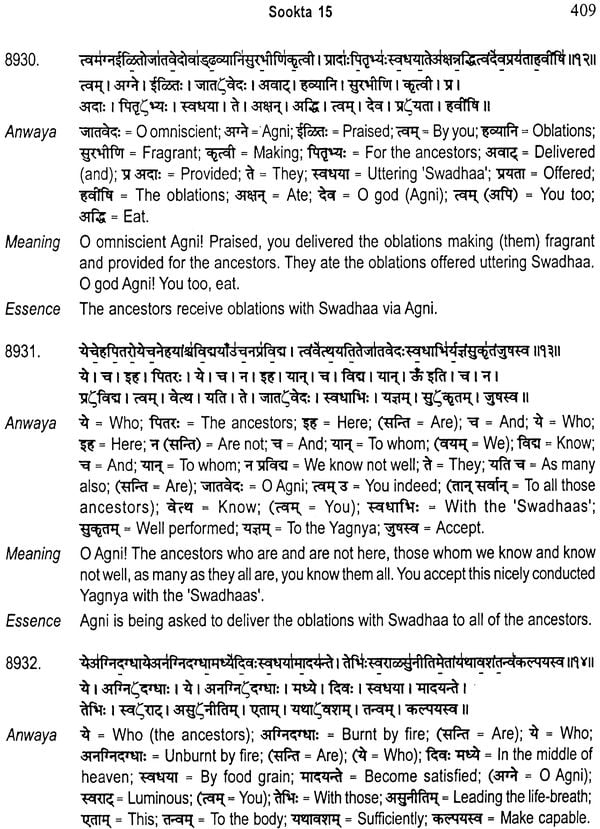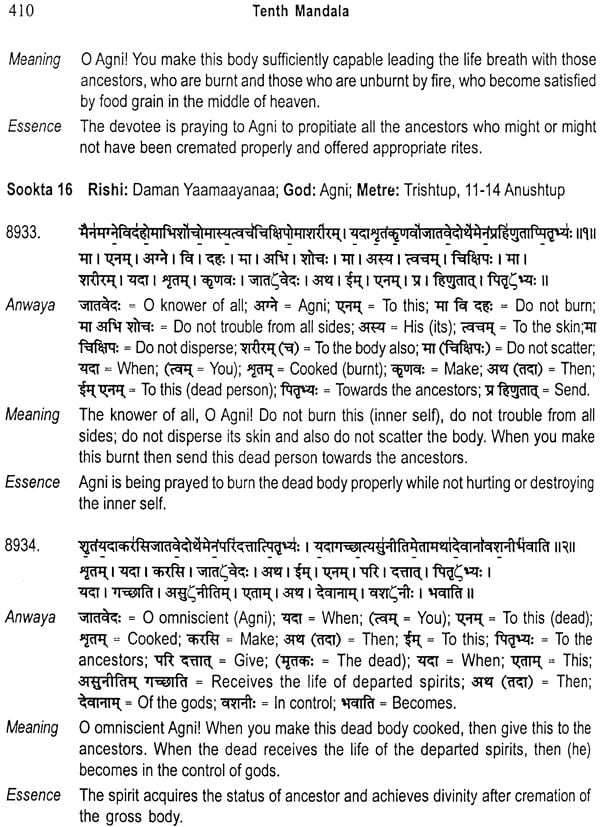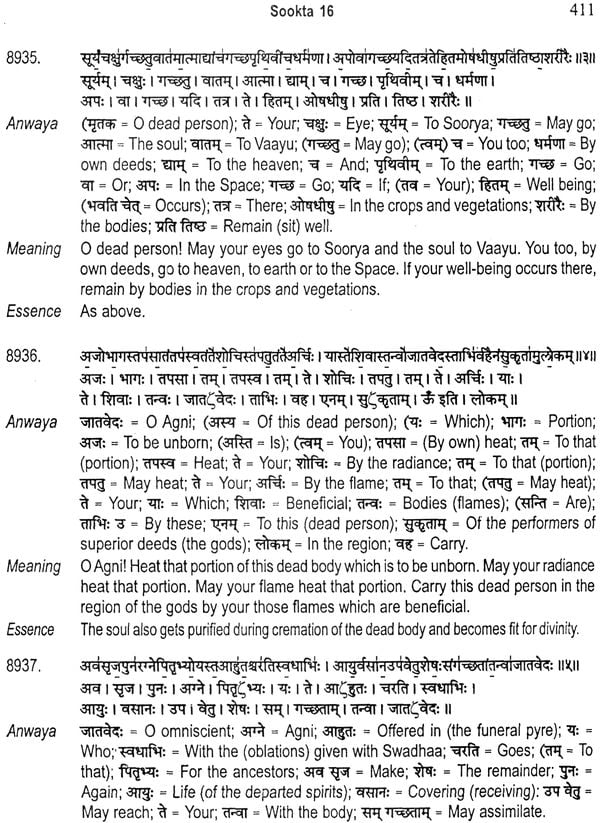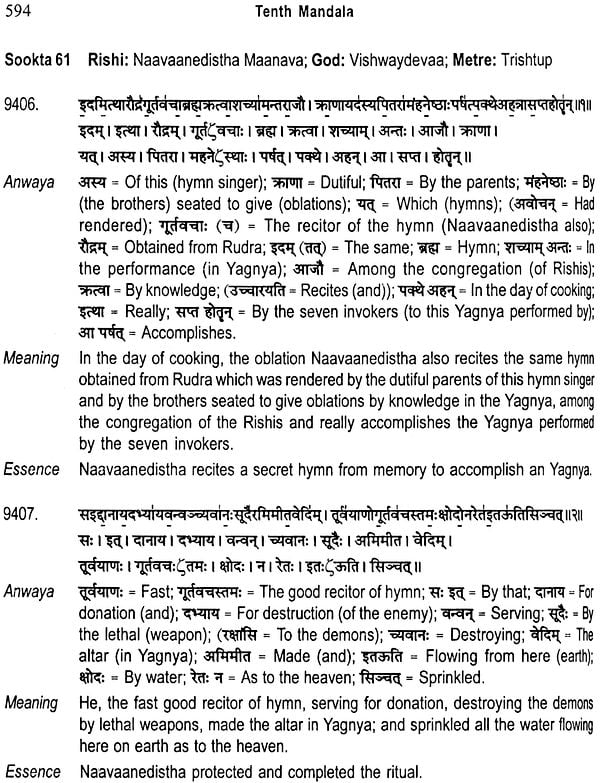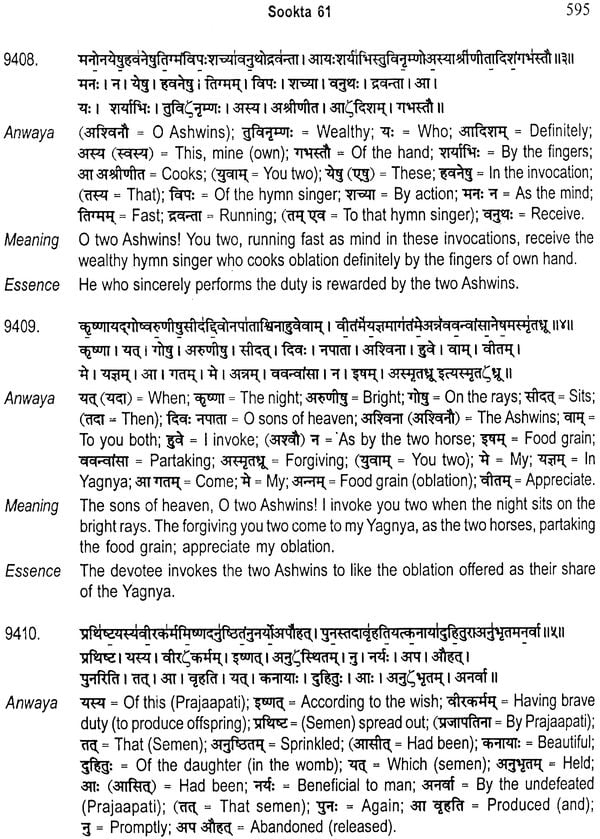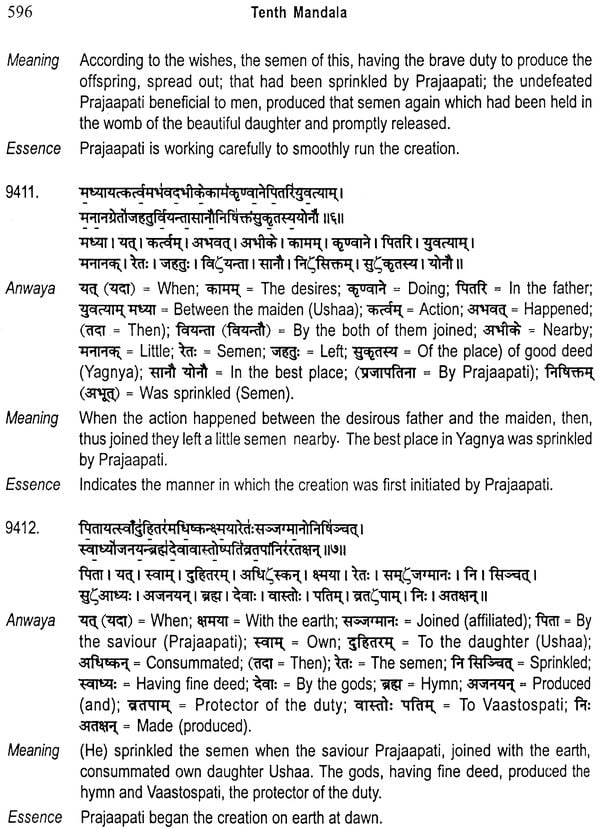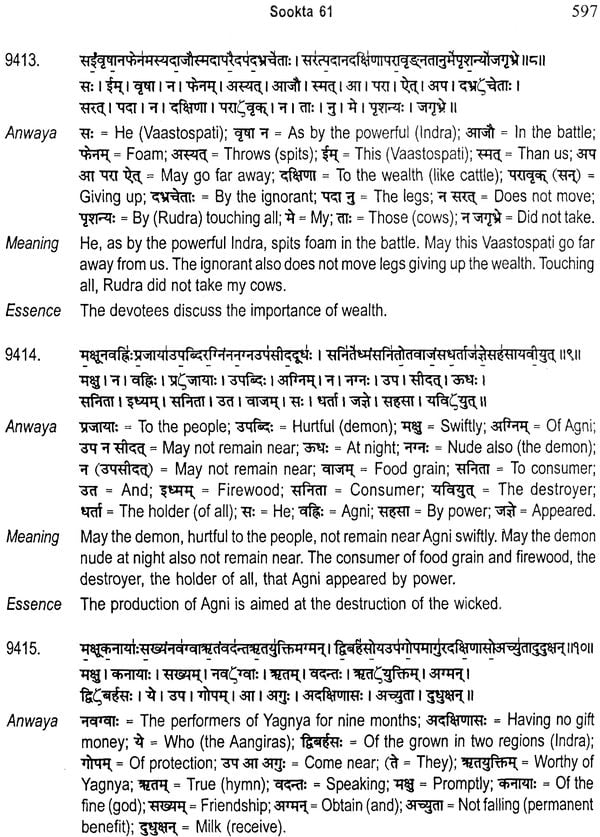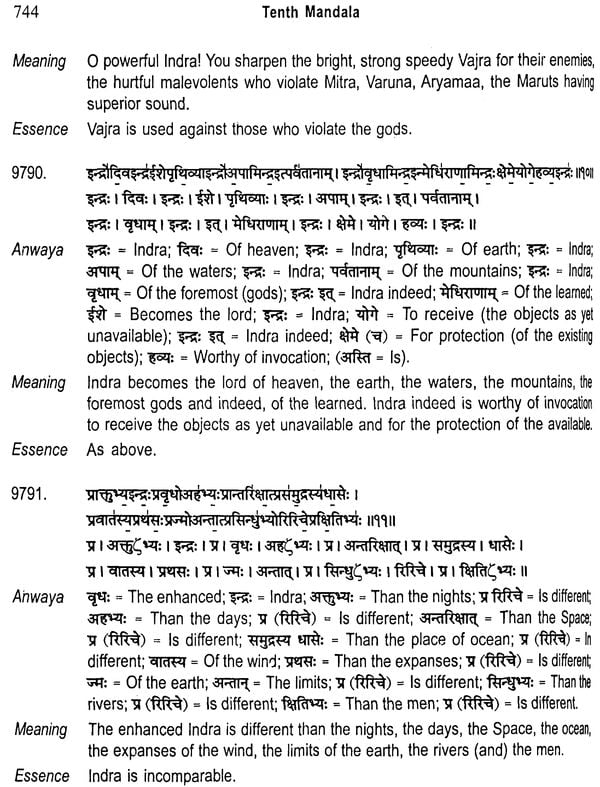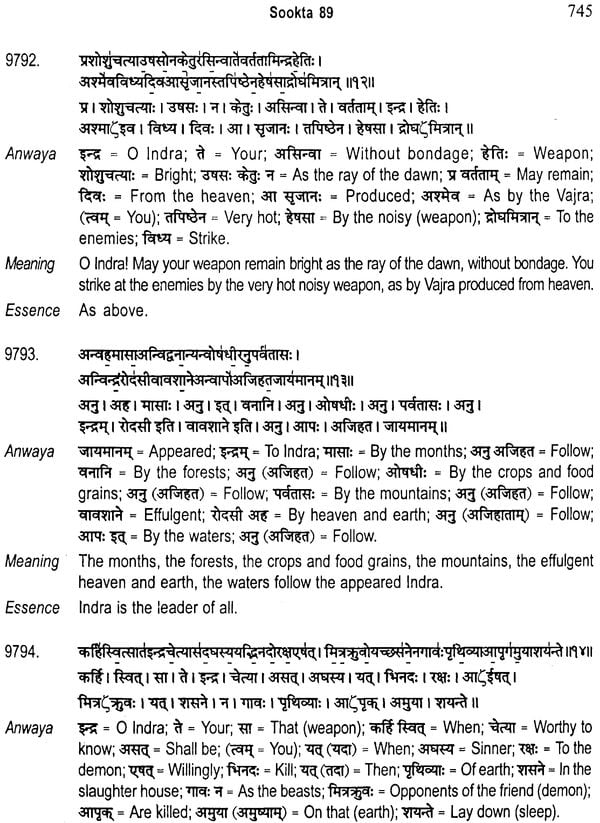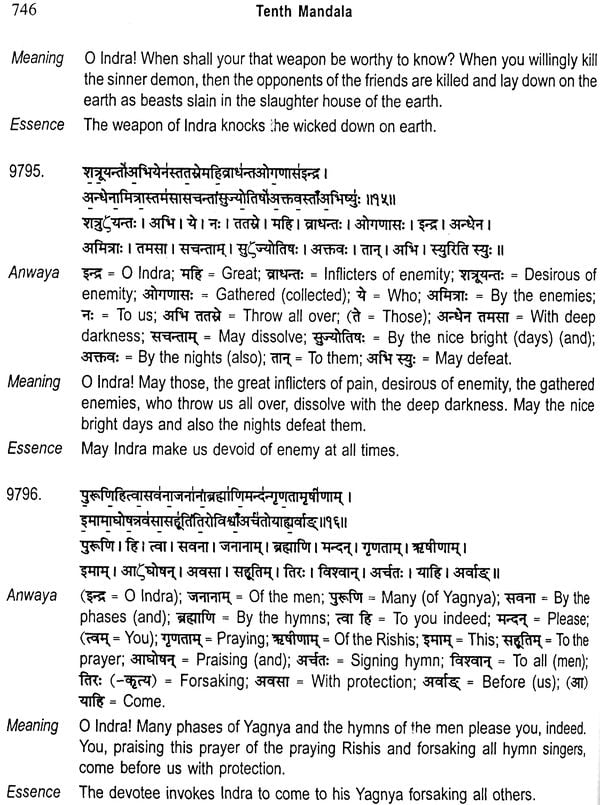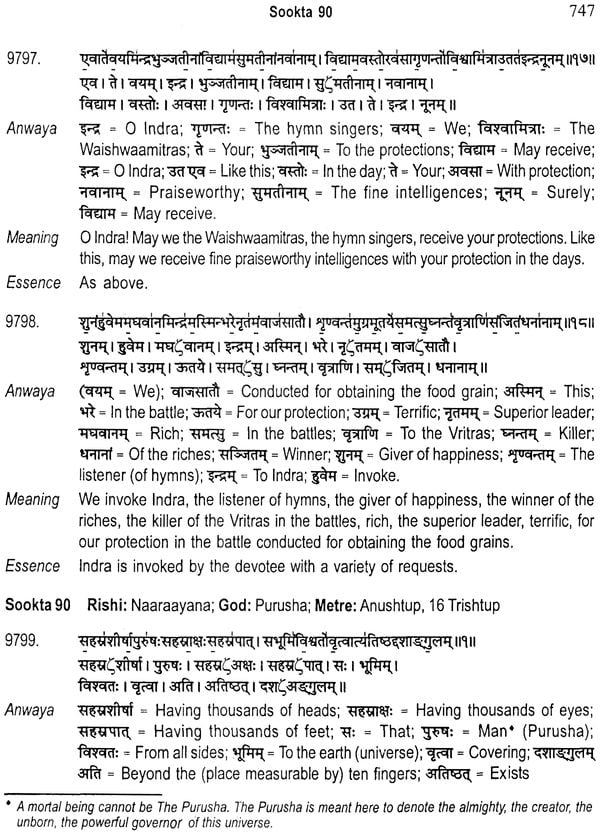
Modern English Translation of The Rig Veda Samhitaa (Volume IV)
Book Specification
| Item Code: | NAK027 |
| Author: | Prasanna Chandra Gautam |
| Publisher: | Bharatiya Vidya Bhavan |
| Language: | Sanskrit Text With Word to Word Meaning English Translation |
| Edition: | 2014 |
| ISBN: | 9788172765187 |
| Pages: | 1052 |
| Cover: | Paperback |
| Other Details | 10 inch x 7 .5 inch |
| Weight | 1.90 kg |
Book Description
The Rig Veda Samhitaa, the most ancient document known to man, has been resurrected word for word in modern English, often emulating the original Mantras in style and presentation.
This is the first time the whole of the Rig Veda Samhitaa has been translated in English directly from the Sanskrit Mantras, with each Mantra having first been interpreted by a group of six scholars of distinction. According to the author there is no similar work, apart from St. James Bible, which has been translated in this manner. An authentic and unique translation, this work is surely a masterpiece. Espousing the source of the ancient knowledge and philosophy, this also makes an invaluable tool for research into the earlier Aryan civilisation.
A must for the scholars and the shelves of all the libraries, this book is a testament to Dr. Gautam's endeavour in search of the truth. The Rig Vedic Mantras need no longer remain in mystery and speculation.
The first paperback limited edition was warmly received by many scholars in Nepal, although it is Shukla Yajur Veda which is traditionally taught there. Unfortunately these volumes could not be made available to the book shops in India and abroad. This was due to the historical trade restrictions that exist between Nepal and India. Hence it is a matter of great comfort to me thatBharatiya Vidya Bhavan (BVB) has undertaken to publish this as a peer reviewed Indian edition to make this reference book easily available to the readers in India and elsewhere.
I am particularly grateful to the late Padmashree Mathoor Krishnamurti, the Director of BVB at Bangalore whose approval of this project had provided me with great encouragement. Unfortunately, he had passed away before this could be published. I am very thankful to his successor Shri H.N. Suresh as the new Director who upheld the decision to recommend its publication by BVB.
I should like to express my appreciation and profound thanks to the Bhavan's Executive Secretary Shri H. N. Dastur and his panel of experts at Bhavan Head Quarters, Mumbai, for all their cooperation and hard work in bringing out this edition. His colleagues Shri P. V.Sankarankutty and others have done a magnificent job.
Very little has been altered in this edition, apart from a few glaring errors in the proof copy. The technical difficulties in getting the full set of the Sanskrit font as used in the original Saayanaedition about 160 years ago required the manuscript to be scanned and printed. This incurred additional cost in printing. Although still expensive, the price of the book hardly matches the cost of production.
No English translation of the Rig Veda has been presented like this in a unanimous and collective manner by a group of experts. I hope that the scholars in India and elsewhere will find this a useful addition to their collection of authentic books on the Rig Veda. I should be grateful to receive your comments and criticisms.
All the Sooktas of this Mandala are dedicated to Pavamana Soma. Eighty two Rishis, including the famous seven, Kashyapa, Jamadagni, Bhaargav, Angirasa, wishwaamitra, Agastya and Kanwa, have presented their Sooktas in the praise of Soma. Thegreat importance given to Some is demonstrated by these facts. This Mandala consists of one hundred and fourteen Sooktas. Most of the first sixty seven Sooktas have the mantras in Gaayatree metre; the rest being in complex metres like Jagatee. These Mantras Present Soma in basically two forms, the gross and the subtle.
The gross form of Soma
Soma Lata, as ascertained from the Rig Veda, is a creeper found in the mountainous rocky areas. One cannot be certain that be currently available Soma Lata is the same as described in the Rig Veda. Its stem is supposed to grow one small leaf everyday according to the phase of the moon. However, much research has been done on a shrub known as the 'moon plant', which is identified to be either Sarcostemma viminalis or Sarcostemma brevistigma, syn. Asclepias acida. Sushruta Samhitaa, a crlrbrated treatise on the practice of Indian medicine Aayurveda, describes twenty four varieties of this plant.
Based upon the description within the Mantras of the Rig Veda, we are informed that this creeper has a nodular structure, is green and green, brown or white juice. Some juice is prepared twice in a day. The stem is pounded by the stones upon two wooden planks. The juice, thus extracted, has to be filtered through a woollen sieve and collected in wooden jars containing a little water. A sound is produced when this mixes with water, suggesting the possibility of a chemical reaction, releasing gas bobbles. The juice is bitter. This is subsequently prepared, mixed with the addition of milk products, roasted barley flour and honey, to make it palatable for consumption. This evaporates. This is stored in a wooden jar, chamoo , and drunk from the wooden cups, chamasa. This has intoxicating properties. This is supposed to cure diseases, provide longevity and good health. The remainder of the plant and its pulp the dregs, are fed to the cattle and horses after the extraction of the juice.
Thus prepared, Some is offered along with prayers as a libation for the gods. The morning production is offered first to the God Indra. The evening production is offered first to the Ashwins the next morning. Huge quantities appear to be produced during the elaborate celebratory rituals, like Soma Yaaga, to offer to the large number of guests. This is collected and stored in a specially designated area.
Various scholars have linked this with the Greek god of medicine, Asclepius, the son of Apollo with his rod and Hoama, also Hom, whose fermented juice occupied an important place in the religious rites in lran. The Indian pharmacologists have extracted lignans – the phyto oestrogens and antioxidants – in its Juice.
The subtle form of Soma
The god in these Sookta is Pavamaana Soma. The Sookta 67 is particularly poingnant in which the other gods like Pooshaa, Agni, Aaditya and Vishwanydavaas are also called the flowing gods, the flowing soma. The mantras 28 & 29 in the 86th Sookta give the concept of Soma in Good details. Soma is also another name of the moon with whom it is closely associated in determining the lunar calendar. All of the eighty two venerated Rishis have, at different times in their Mantras, perceived some to be the flowing God, the essence of life, the creator, the preserver of life, the creator of the gods, the immortal, the provider of happiness and peace. There is sufficient information in the mantras of these Soktas to study Soma in depth. This is given in Appendix 1.
| 1 | Ninth Mandala (Sooktas 1-114) | 1 |
| 2 | Tenth Mandala (Sooktas 1-191) | 353 |
| 3 | References | 1033 |
| 4 | Bibliography | 1034 |
| 5 | Appendix - 1: Sookta for Indra, Agni, Vaayu and Soma | 1045 |
| 6 | Appendix - 2: Introduction to religious ceremonials | 1047 |
